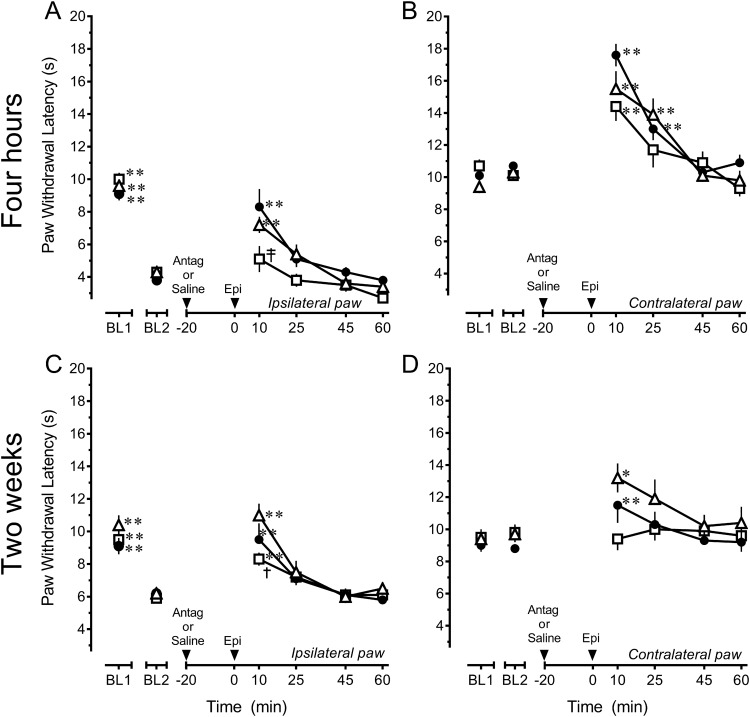Fig. 4.
Persistent inflammatory injury alters the mechanisms by which epibatidine modulates nociception in the rostral ventromedial medulla in a time-dependent manner. A, Microinjection of 5 μg DHβE (☐, n = 8) completely antagonizes while 1 μg MLA (▵, n = 8) does not diminish the antihyperalgesic effect of 4.11 ng epibatidine (Epi) in rats that received an intraplantar injection of CFA 4 h earlier compared to saline (●, n = 9). B, Microinjection of 5 μg DHβE (☐, n = 8) or 1 μg MLA (▵, n = 8) did not antagonize the increase in paw withdrawal latency of the contralateral hind paw in rats that received an intraplantar injection of CFA 4 h earlier compared to saline (●, n = 9). C, Microinjection of 5 μg DHβE (☐, n = 9) only partially antagonizes while 1 μg MLA (▵, n = 5) does not diminish the antihyperalgesic effect of 4.11 ng epibatidine in rats that received an intraplantar injection of CFA 2 weeks earlier compared to saline (●, n = 9). D, Microinjection of 5 μg DHβE (☐, n = 9) or 1 μg MLA (▵, n = 5) before 4.11 ng epibatidine did not alter PWL of the contralateral hind paw in rats that received an intraplantar injection of CFA 2 weeks earlier compared to saline before 4.11 ng epibatidine (●, n = 9). Data are mean ± SEM. BL1 refers to paw withdrawal latency before and BL2 refers to paw withdrawal latency after injection of CFA. *p < 0.05, **p < 0.01 compared with BL2 values. †p < 0.05, ‡p < 0.01 compared with saline control at the corresponding time point. Two-way repeated-measures ANOVA followed by Holm–Sidak test.

